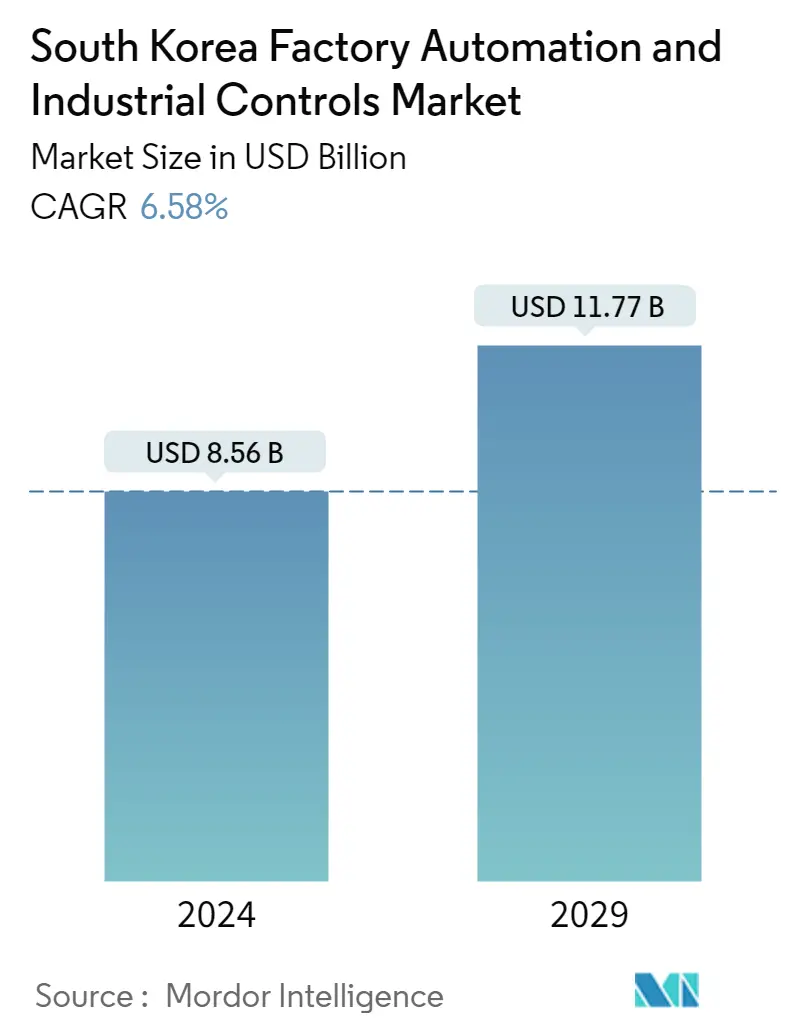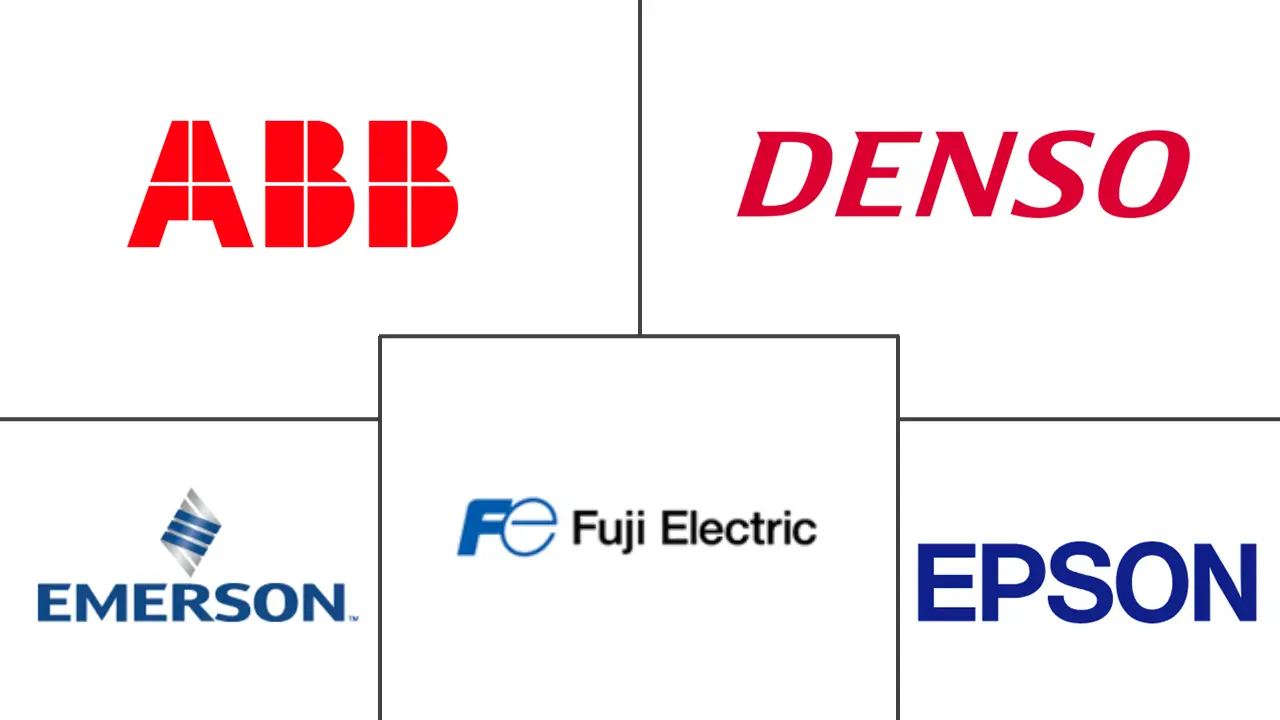Market Size of South Korea Factory Automation and Industrial Controls Industry

| Study Period | 2019 - 2029 |
| Base Year For Estimation | 2023 |
| Market Size (2024) | USD 8.56 Billion |
| Market Size (2029) | USD 11.77 Billion |
| CAGR (2024 - 2029) | 6.58 % |
| Market Concentration | Low |
Major Players
*Disclaimer: Major Players sorted in no particular order |
Need a report that reflects how COVID-19 has impacted this market and its growth?
South Korea Factory Automation & Industrial Controls Market Analysis
The South Korea Factory Automation and Industrial Controls Market size is estimated at USD 8.56 billion in 2024, and is expected to reach USD 11.77 billion by 2029, growing at a CAGR of 6.58% during the forecast period (2024-2029).
Due to the rising demand for PLC, SCADA, and industrial robots across various end-user sectors, the market is expanding.
The numbers for the South Korean FAICS market are derived by evaluating contributions of various product types, such as presence sensing safety sensors, emergency stop devices, safety controllers/modules, safety mats, programmable logic controllers (PLC), human-machine interface (HMI), machine vision systems, industrial robotics, sensors and transmitters, switches, relays, and industrial power supplies.
Automation of manufacturing processes has various benefits, such as effortless monitoring, waste reduction, and production speed. This technology provides customers with improved quality with standardization and dependable products in less time and cost.
Moreover, the introduction of always-on-e-commerce fueled the demand for faster responses and the need to manage a more significant number of stock-keeping units (SKUs) with fewer errors; warehouses and fulfillment centers need to scale up and meet standards of a smart, efficient, and automated factory solutions.
Furthermore, huge capital is required to set up and install industrial robots in the factory. The average cost of a fixed robot ranges between USD 60,000-140,000, whereas the average cost of a mobile robot varies between USD 25,000-40,000. These high costs discourage factory operators from choosing high-end industrial robots, which challenges the market's growth.
The COVID-19 pandemic complicated the situation of automation adoption in various sectors. It changed the standard operating procedure by bringing in unique challenges of social distancing and contactless operation. Organizations were forced to limit their workforce and deal with the increasing demand. Social distancing measures had a more significant impact as they led manufacturers to restructure operations to rely more on robotics in the region. Overall, the COVID-19 pandemic slowed down the market but improved and steadily expanded in the post-pandemic era.
Factory Automation and Industrial Control Market in South Korea Report Snapshots
- Factory Automation and Industrial Control Market in South Korea Market Size
- Factory Automation and Industrial Control Market in South Korea Market Share
- Factory Automation and Industrial Control Market in South Korea Market Trends
- Factory Automation and Industrial Control Market in South Korea Companies
